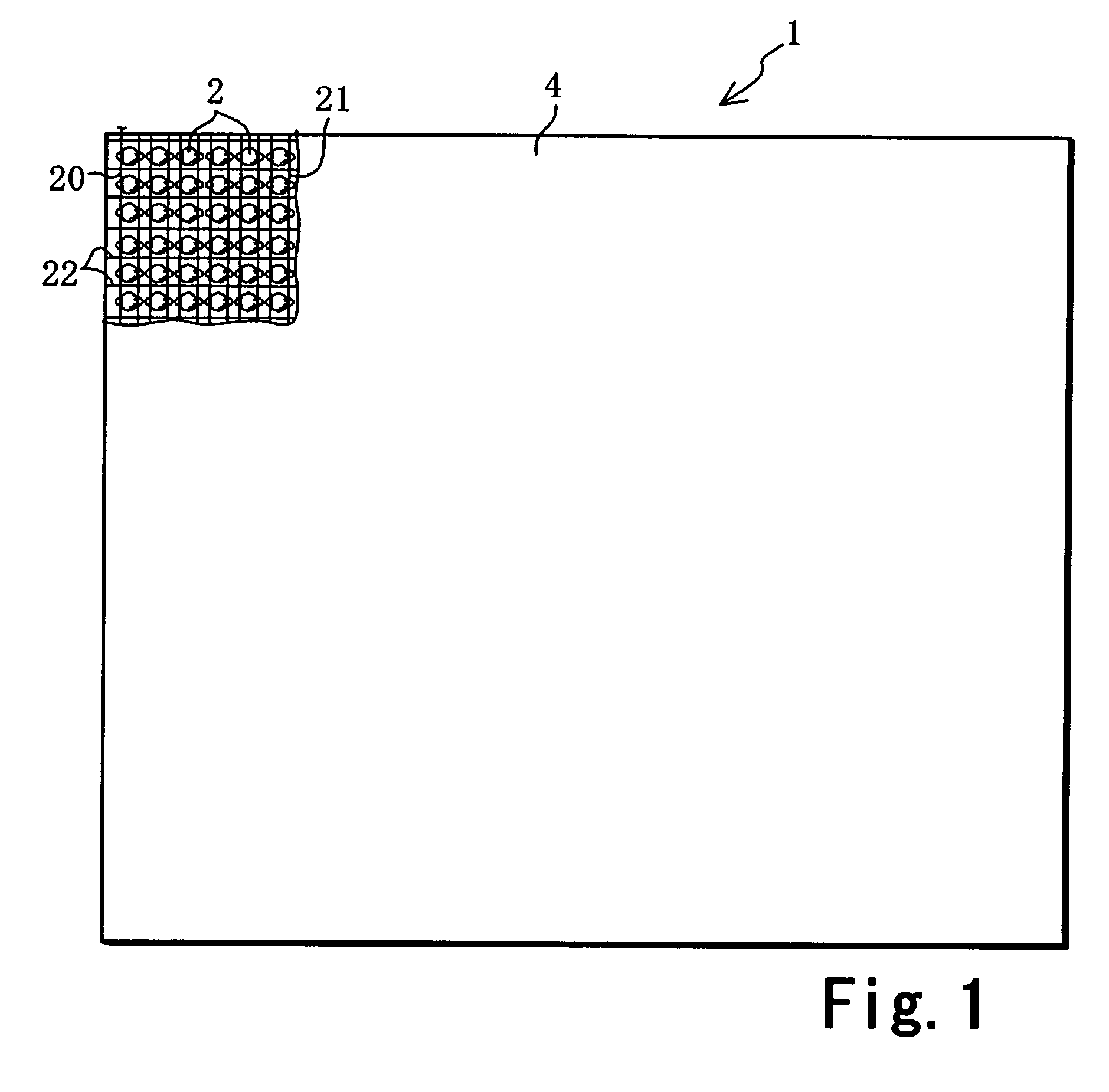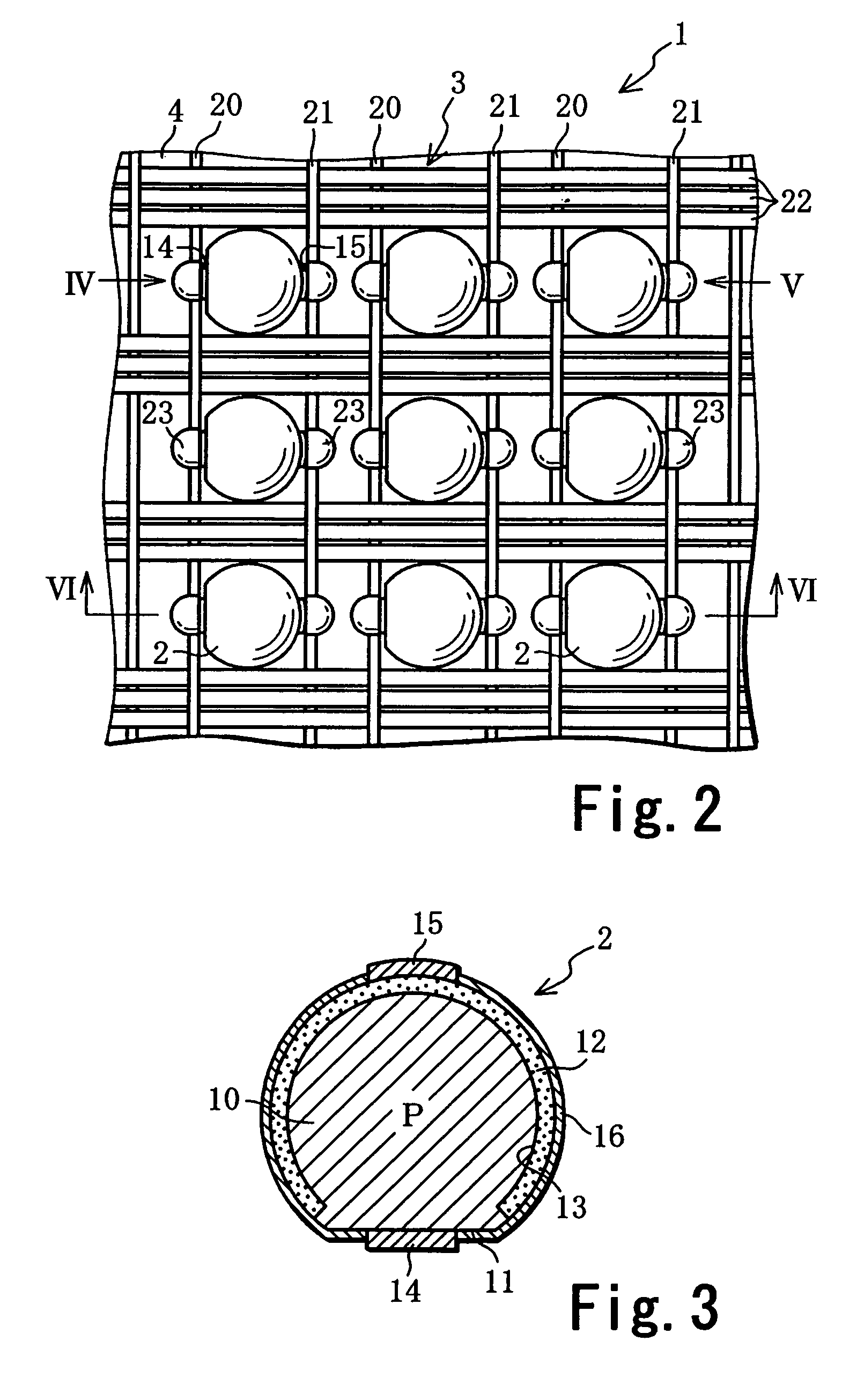Light receiving or light emitting modular sheet and process for producing the same
a technology of light receiving or light emitting modules, applied in the direction of sustainable manufacturing/processing, final product manufacturing, lighting and heating apparatus, etc., can solve the problems of increased production costs, difficult to evaluate the properties and quality of individual solar battery elements, and difficult to say that they constantly utilize light in an efficient manner. , to achieve the effect of reliable production of high-quality module sheets, easy connection and simplified production process
- Summary
- Abstract
- Description
- Claims
- Application Information
AI Technical Summary
Benefits of technology
Problems solved by technology
Method used
Image
Examples
embodiment 1 (see fig.10)
1) Modified Embodiment 1 (see FIG. 10)
[0076]In this modified embodiment, solar battery elements having no electrodes are connected to conductive wires by alloy joining to produce a light receiving module sheet 1, the production process of which is described hereafter.
[0077]First, the solar battery element shown in FIG. 8(d) is produced. The silicon oxide film 35 is completely removed using the buffer etching solution to produce a solar battery element 2A, and a mesh member 3A is then prepared by weaving positive and negative electrode conductive wires 20A and 21A extending in the columnar direction and tension wires 22 extending in the row direction. Here, the conductive wires 20A and 21A are made of an aluminum line containing 1% to 2% of silicon that is eutectic reactive to silicon and having a diameter of approximately 120 μm. The tension wires 22 are the same as the tension wires in the afore-mentioned embodiment, hence the explanation is omitted.
[0078]A number of solar battery ...
embodiment 2 (see figs.11 and 12)
2) Modified Embodiment 2 (see FIGS. 11 and 12)
[0082]A modified embodiment having a modified sealing member is described hereafter. A light receiving module sheet 1B may be formed with the structure shown in FIG. 11. The light receiving module sheet 1B is provided with a sealing member 4B comprising a flexible cushion layer 46 that houses the solar battery elements 2 and mesh member 3 in an embedded manner and transparent surface layers 45 joined to the top and bottom surfaces of the cushion layer 46. The surface layers 45 are made of a transparent enforced glass plate having a thickness of approximately 2 mm.
[0083]In order to produce the light receiving module sheet 1B, a surface layer 45, an EVA (ethylene vinyl acetate) sheet, a mesh member 3 to which the solar battery elements 2 are joined, an EVA sheet, a surface layer 45 are superimposed in sequence and are heated in a laminate machine while vacuuming. Then, the EVA sheets melt, the EVA melt between the top and bottom surface la...
embodiment 3
3) Modified Embodiment 3
[0089]The light receiving module sheet may be produced by a roll-to-roll technique. When a roll-to-roll technique is used, the mesh member is fixed at both ends in the width-wise direction using heat-resistant resin films such as polyimide films. Sprocket holes are formed in the heat-resistant resin films. The sprockets holes are engaged in sprockets to roll the mesh member in or out.
PUM
 Login to View More
Login to View More Abstract
Description
Claims
Application Information
 Login to View More
Login to View More - R&D
- Intellectual Property
- Life Sciences
- Materials
- Tech Scout
- Unparalleled Data Quality
- Higher Quality Content
- 60% Fewer Hallucinations
Browse by: Latest US Patents, China's latest patents, Technical Efficacy Thesaurus, Application Domain, Technology Topic, Popular Technical Reports.
© 2025 PatSnap. All rights reserved.Legal|Privacy policy|Modern Slavery Act Transparency Statement|Sitemap|About US| Contact US: help@patsnap.com



